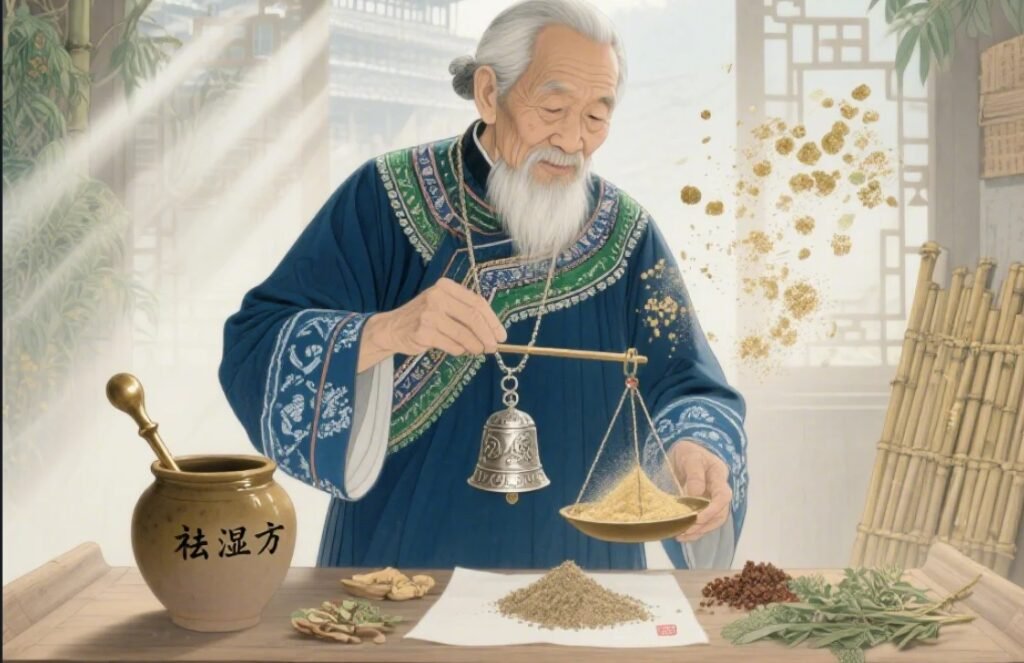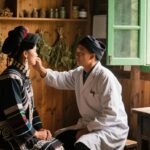Xiuga Xiudongxiang (Dysentery)
Overview
In Miao medicine, dysentery is called Xiuga Xiudongxiang. It presents as frequent stools, abdominal pain, and passage of blood or white mucus. It arises from contaminated food, poor hygiene, or invasion of damp–heat pathogens that disrupt spleen–stomach qi–fluid balance.
In Traditional Chinese Medicine, dysentery involves toxins lodging in the intestines, causing qi–blood stagnation and impaired transmission, with clinical features of abdominal pain, tenesmus, and bloody/mucous stools. Western parallels include bacterial or amebic dysentery, ulcerative colitis, radiation colitis, and food poisoning.
Subtypes
Hot–channel red–white dysentery
Hot–channel toxic dysentery
Cold–channel dysentery
Etiology & Pathogenesis
Epidemic (“heat”) toxins or contaminated food invade the intestines.
Damp–heat or water toxin injures spleen–stomach qi, leading to fluid accumulation or heat in the bowel.
Acute cases: sudden high fever, abdominal pain, frequent bloody diarrhea.
Chronic cases: insidious onset, recurrent loose stools with mucus or blood.
Key Diagnostic Points
Symptoms: Abdominal pain, tenesmus, frequent passage of blood/mucus in stool.
History: Unclean diet, summertime, exposure to contaminated water/food.
Laboratory: CBC, stool microscopy/culture; colonoscopy or barium enema if chronic.

Differential: Diarrhea (Zaga)
| Feature | Diarrhea (Zaga) | Dysentery (Xiuga Xiudongxiang) |
|---|---|---|
| Stool | Watery, no blood | Blood or white mucus |
| Tenesmus | Mild or none | Severe urgency |
| Abdominal pain | Mild, relieves after stool | Intense, persists |
Treatment
1. Hot–Channel Red–White Dysentery
Signs: Fever/chills, abdominal pain, tenesmus, bloody/mucous stools, burning at anus.
Principle: Clear heat and dampness; astringe to stop dysentery.
Formula (decoction):
Huangbo (Phellodendron amurense) 12g
Baishao (Paeonia lactiflora) 10g
Dihuazi (Eriobotrya japonica leaf) 15g
Weilingcai (Duchesnea indica) 12g
Huoxiang (Agastache rugosa) 10g
2. Hot–Channel Toxic Dysentery
Signs: Sudden high fever, agitation, vomiting, frequent bloody diarrhea, possible convulsions.
Principle: Clear heat–detoxify; astringe dysentery.
Formula (decoction):
Huangmaogencao (Artemisia capillaris) 15g
Weilingcai (Duchesnea indica) 15g
Machixian (Portulaca oleracea) 15g
Baishao (Paeonia lactiflora) 10g
Sankezhen (Toona sinensis) 10g
3. Cold–Channel Dysentery
Signs: Chronic loose stools with mucus or blood, cold extremities, fatigue, tenesmus, better after warmth.
Principle: Warm and tonify spleen–stomach; astringe to stop dysentery.
Formula (decoction):
Dangshen (Codonopsis pilosula) 20g
Shiliupi (Pomegranate peel) 15g
Ciwu Jia (Eleutherococcus senticosus) 15g
Fangfeng (Saposhnikovia divaricata) 15g
Prevention & Care
Maintain hygiene; avoid contaminated food/water.
Acute phase: fasting, then light, easily digestible diet.
Keep warm and manage stress.
Note
Miao medicine emphasizes the interplay of qi, blood, and fluids. Dysentery (used in traditional contexts) focuses on clearing toxin and dampness or warming the middle, plus astringent measures to halt stools. Continuous monitoring and supportive care are essential.


Leave a Reply